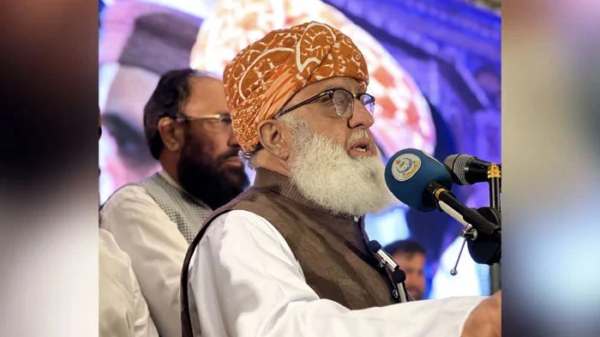Educational System
ISLAMABAD: In the heart of South Asia, Pakistan is a nation encircled by enormous intricacies in its educational landscape – the glaring duality of its educational system. This division is marked by a distinct contrast between elite institutions favored by the well-off and the struggling public schools accessible to the underprivileged masses. In this article, we delve into the profound disparities between prestigious schools and the under-resourced public education sector and examine the implications of this divide for Pakistan’s future.
Within this dual educational system, a reality emerges: students from elite schools, benefiting from top-tier facilities and a rich array of educational opportunities often graduate as the “Cream of The Crop.” However, their trajectory frequently leads them abroad, seeking better prospects, higher education, and an improved quality of life – a phenomenon called the ‘Brain Drain.’ This raises questions about the substantial investments made in their education, which often yield returns for foreign nations rather than Pakistan.
Conversely, public schools and colleges present an utter contrast. Overcrowded classrooms, outdated textbooks, and limited resources characterize the educational system for the majority. The privileged few revel in elite institutions, while most are left caught in the faults of the public education system. In exploring Pakistan’s dual educational system, the aim is to dissect its complex syndromes, analyze the sociopolitical implications of this divide, and offer glimpses of potential solutions for a more equitable future. This exploration is an invitation for collective introspection as Pakistan endeavors to align the aspirations of its youth with the demands of its progress.
THE CREAM OF THE CROP
Elite educational institutions and their counterparts have come to symbolize the climax of academic excellence in Pakistan. These schools are marked by many unique attributes that set them apart, underpinned by an exceptional allocation of resources and a commitment to fostering a holistic learning environment.

Statistics reveal a stark contrast in terms of resources. According to the Annual Status of Education Report (ASER) report in 2019, Pakistan’s public schools, attended by the majority, faced severe resource shortages. The report indicated that approximately 56% of public schools lacked functional toilets, and a significant proportion operated without electricity. Elite private schools often have state-of-the-art facilities, well-maintained infrastructure, libraries stocked with the latest publications, and technologically advanced classrooms. These schools boast a student-to-teacher ratio, allowing individualized attention and small class sizes, a luxury beyond reach for most public institutions.
Beyond physical infrastructure, these elite institutions are known for their commitment to educational excellence. Private schools in Pakistan often employ better-qualified teachers, with most having at least a bachelor’s degree or higher. In contrast, government schools frequently have a shortage of qualified teaching staff. This directly impacts the quality of education imparted in these institutions.
The extracurricular activities available in elite schools further distinguish them. These institutions invest heavily in sports, arts, and cultural activities, providing students with a well-rounded education. For example, with its vast network of schools across the country, the Beacon House School System strongly emphasises cocurricular activities, nurturing talent in music, arts, sports, and more. Such opportunities enhance students’ skill sets and contribute to their overall personal development.
These attributes, backed by substantial resources and unwavering commitment to educational excellence, position students graduating from these elite schools as the “Cream of the Crop.” These students emerge from their educational journey with a distinct advantage and are well-prepared to excel in competitive academic and professional spheres within Pakistan and abroad. The access to advanced learning environments and a wealth of extracurricular activities in these institutions equips them with skills and experiences that set them apart, perpetuating the perception of excellence associated with these schools.
BRAIN DRAIN
The phenomenon of the Brain Drain in Pakistan is a complex intricacy compounded by the departure of many of its brightest minds, particularly those who graduate from elite educational institutions. These students, often called the nation’s “Cream of the Crop,” embark westward in pursuit of superior academic and career opportunities. In this process, not only does Pakistan lose its intellectual capital, but the substantial investments made by their families in their education often yield returns on foreign shores.
According to data from the Higher Education Commission of Pakistan, 60,000 students opt to study abroad each year. Western countries like the United States, the United Kingdom, Canada, and Australia are among the preferred destinations. This departure is driven by various factors, including the attraction of internationally recognized universities, the promise of high-quality education, and the potential for better career prospects.
The investment in these students’ education is substantial and multifaceted. Families from various socioeconomic backgrounds are known to make financial sacrifices to secure their children’s admission into elite schools. Tuition fees, additional coaching classes, and other educational expenses can account for a significant portion of a family’s income. Beyond monetary investments, parents invest their hopes, aspirations, and dreams in these students, envisioning them as harbingers of positive change for Pakistan’s future.
However, when these exceptionally educated individuals opt to continue their higher education or build their careers abroad, the nation’s investment often flows out of the country. The funds expended on early education, extracurricular activities, and university admissions find fruition on foreign shores. The “Brain Drain” phenomenon thus signifies a substantial loss, as Pakistan’s investment in grooming its brightest minds is not retained within its borders.
This ongoing outflow of talent and resources to other nations can have severe implications for Pakistan. It results in a talent shortage within the country, especially in sectors that require specialised skills and knowledge. The economic impact is also profound since Pakistan loses the contributions these highly educated individuals could make to its economy and development. This phenomenon spreads a cycle of underinvestment in the country’s education system, further exacerbating the existing disparities in the dual education system.
HAVES AND THE HAVE-NOTS
The disparities between elite private and government-run schools in Pakistan reflect a deeply cemented socio-educational divide. These disparities manifest on multiple fronts, encompassing resources, infrastructure, and, most crucially, the quality of education imparted.
In the realm of resources, elite private schools enjoy a profound advantage. The classrooms are equipped with modern technology, offering students an interactive and dynamic learning experience. In contrast, government-run schools often grapple with a severe shortage of resources. Overcrowded classrooms are a norm, where a single teacher must manage many students, impeding individualized attention and practical learning.
The most significant differentiation, however, lies in the quality of education. Elite schools have the resources to attract and retain well-qualified educators, ensuring a high standard of teaching. They implement contemporary curricula that are in line with international standards. These schools also foster extracurricular activities, which are pivotal to a student’s development.
However, government-run schools grapple with a shortage of qualified teaching staff. Many educators in these institutions lack proper training, leading to a dilution in the quality of education. Outdated textbooks and curricula are often the norm, rendering students ill-equipped to compete in a rapidly evolving global landscape.
These disparities paint a bleak picture for students attending government schools, who face a formidable struggle for quality education. Overcrowded classrooms hamper the learning process, while outdated resources and underqualified teachers perpetuate a cycle of substandard education.
Consequently, the disparities in the dual education system in Pakistan contribute to an entrenched cycle of inequality and hinder social mobility, cementing the divide between the haves and the have-nots. Addressing these disparities is not just a matter of in the educational system but a question of social justice, equity, and the nation’s future development.
THE ECONOMIC AND SOCIAL IMPACT
The dual educational system in Pakistan, characterised by a stark contrast between elite private and government-run schools, exerts profound and enduring consequences on the nation’s economy and social fabric. This system not only perpetuates inequality but also substantially impedes social mobility, thereby undermining Pakistan’s long-term economic and societal prospects.
Economically, the dual education system exacerbates inequality in the country. Elite private schools produce graduates who, owing to their superior educational backgrounds, are better equipped to access higher-paying jobs and contribute more substantially to the nation’s economic growth.
These students, often called the “Cream of the Crop,” have access to the resources and opportunities that position them for success. Consequently, they tend to secure better-paying positions, both domestically and abroad, effectively driving income inequality.
Students from government-run schools, lacking adequate resources and quality education, are frequently relegated to lower-wage employment opportunities or unemployment. The implications of this economic divide extend beyond individual livelihoods, affecting the nation’s overall financial health. The limited access to quality education perpetuates a cycle of low productivity and skill mismatch, stunting economic progress and limiting the country’s ability to compete on a global scale.
In the long term, these inequalities can have detrimental social consequences. A society marked by a lack of upward mobility fosters frustration and disillusion among those systematically denied access to better opportunities. It can lead to social unrest, resentment, and decreased social cohesion, undermining the nation’s fabric.
To address these long-term consequences, it is of utmost need for the policymakers of Pakistan to prioritize educational reform that focuses on equalizing opportunities, enhancing the quality of public education, and mitigating the disparities between private and public educational institutions.
A more equitable education system is an ethical imperative and a key driver of economic growth and social cohesion. By bridging the gap between the haves and have-nots in the educational realm, Pakistan can work toward a more inclusive, prosperous, and harmonious future.
POSSIBLE SOLUTIONS
A multifaceted approach is essential to address pervasive educational disparities and bridge the prevailing education gap in Pakistan. First and foremost, a substantial increase in government investment in public education is imperative. This entails allocating more of the national budget to education to enhance infrastructure and resources and attract and retain qualified teaching staff.
Comprehensive reforms also aimed at improving the quality of curricula and standardized testing are vital. Public-private partnerships can be pivotal in expanding access to quality education, ensuring a broader reach, and ameliorating resource constraints.
Collaborations between government bodies and private organizations can leverage the strengths of both sectors to effect positive change. Success stories from organizations and initiatives that have made strides in underprivileged areas should serve as guiding examples.
Initiatives such as The Citizens Foundation (TCF), which focuses on creating affordable schools in underserved regions, exemplify the transformative potential of concerted efforts to bridge the education gap. These solutions collectively present a viable pathway toward a more equitable education system, thereby fostering a brighter and more inclusive future for Pakistan.
CONCLUSION
The dual education system in Pakistan, epitomized by the stark divide between elite private schools and government-run institutions, underscores a critical issue that transcends the confines of classrooms and textbooks. The disparities in resources, infrastructure, and quality of education perpetuate inequality and hinder social mobility, with far-reaching consequences for Pakistan’s economic growth and societal cohesion. It is imperative to acknowledge that bridging this divide is not merely a matter of educational reform but a collective responsibility of society and government.
A comprehensive commitment to increased investment in public education, substantial reforms, and meaningful public-private partnerships offers a viable roadmap toward a more equitable and inclusive educational landscape. The future of Pakistan, its unity, and its prosperity depend on ensuring that quality education is accessible to all as a fundamental human right and a cornerstone of a thriving nation.










